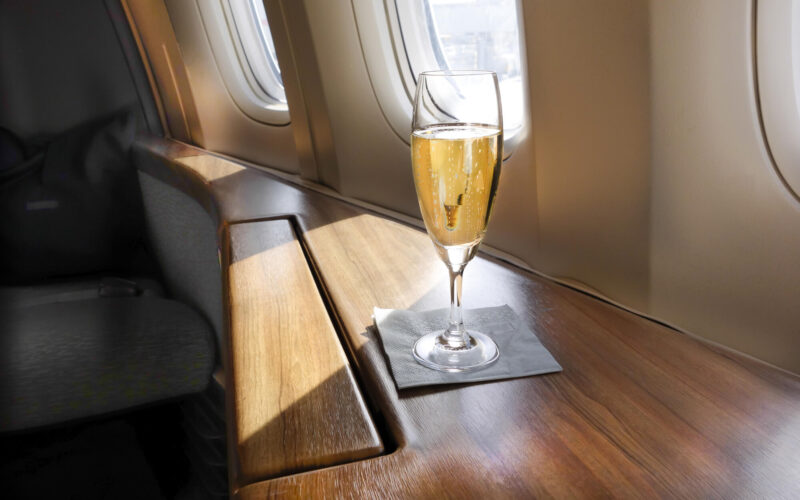Is drinking champagne any different when you fly?

Since the beginning of commercial aviation, champagne has been a staple in-flight drink. Countless advertisements depict flight attendants pouring a glass of liquid gold for exhilarated passengers. But is drinking champagne any different when you are in the clouds? As New Year’s Eve approaches, AeroTime investigates.
Airlines across the world seek to serve the crème de la crème of champagne to their most exclusive passengers. Air France, Emirates, and Japan Airlines all serve vintages that would not be out of place in a luxury hotel. Even British Airways does not shy from serving French sparkling wines to its first-class customers.
But is it all worth it?
Food and drink ordered on a flight are notorious for not having the same flavor as on the ground. This difference in perception has a scientific explanation.
A study conducted by the Fraunhofer Institute for Building Physics and commissioned by the German national carrier Lufthansa showed that “salt is perceived to be between 20 and 30% less intense and sugar 15 to 20% less intense” when consumed in the air. This is due to a combination of dryness and pressure inside the cabin. Conversely, our perception of acidity remains more or less unaffected. Dryness also prevents our nose from picking up the smell, which accounts for 80% of the perceived sense of taste.
While the study focuses on food, the same also applies to drinks. For this reason, more expressive but not too acidic wines should be preferred. Consuming your drink at the beginning of the flight and before the conditions affect your senses could also help.
But it might be difficult to enjoy champagne properly. At altitude, the sparkling wine produces larger bubbles that stick to the walls of the glass, rather than the steady stream of finer bubbles that hit the surface when observed on the ground. This can result in an overall reduction of the champagne’s aroma.
What about the next frontier?
For the foreseeable future, it is likely that space tourism will remain a luxury that only the wealthy can afford. But as they orbit the Earth, will the selected few be able to celebrate their space odyssey with a glass of champagne?
For now, drinking in space is far from a glamorous experience. Without gravity, liquids cannot flow out of a bottle. Thus, astronauts in the International Space Station have to suck drinking water from a pouch through a straw.
French designer Octave de Gaulle (the great-grand-nephew of the late president, Charles de Gaulle) wants to change that reality. His agency, Spade, specializes in the design and study of objects that may one day accompany humans in space. Since 2015, Spade has collaborated with champagne producer Mumm to find a solution that would allow space travelers to enjoy champagne the way it is meant to be enjoyed – out of a bottle and into a glass.
After three years of studies that included Zero-G flights onboard Novespace’s Airbus A310, de Gaulle finally unveiled his solution: a ring at the mouth of the bottle, which turns the pressurized champagne into an orb of foam that can then be collected using a small glass.
Whether this bottle can survive a trip to orbit remains to be seen. While alcohol is (mostly) prohibited on the International Space Station, the bottle could attract the attention of space tourism companies such as Elon Musk’s SpaceX, Jeff Bezos’ Blue Origin, or Richard Branson’s Virgin Galactic.
